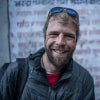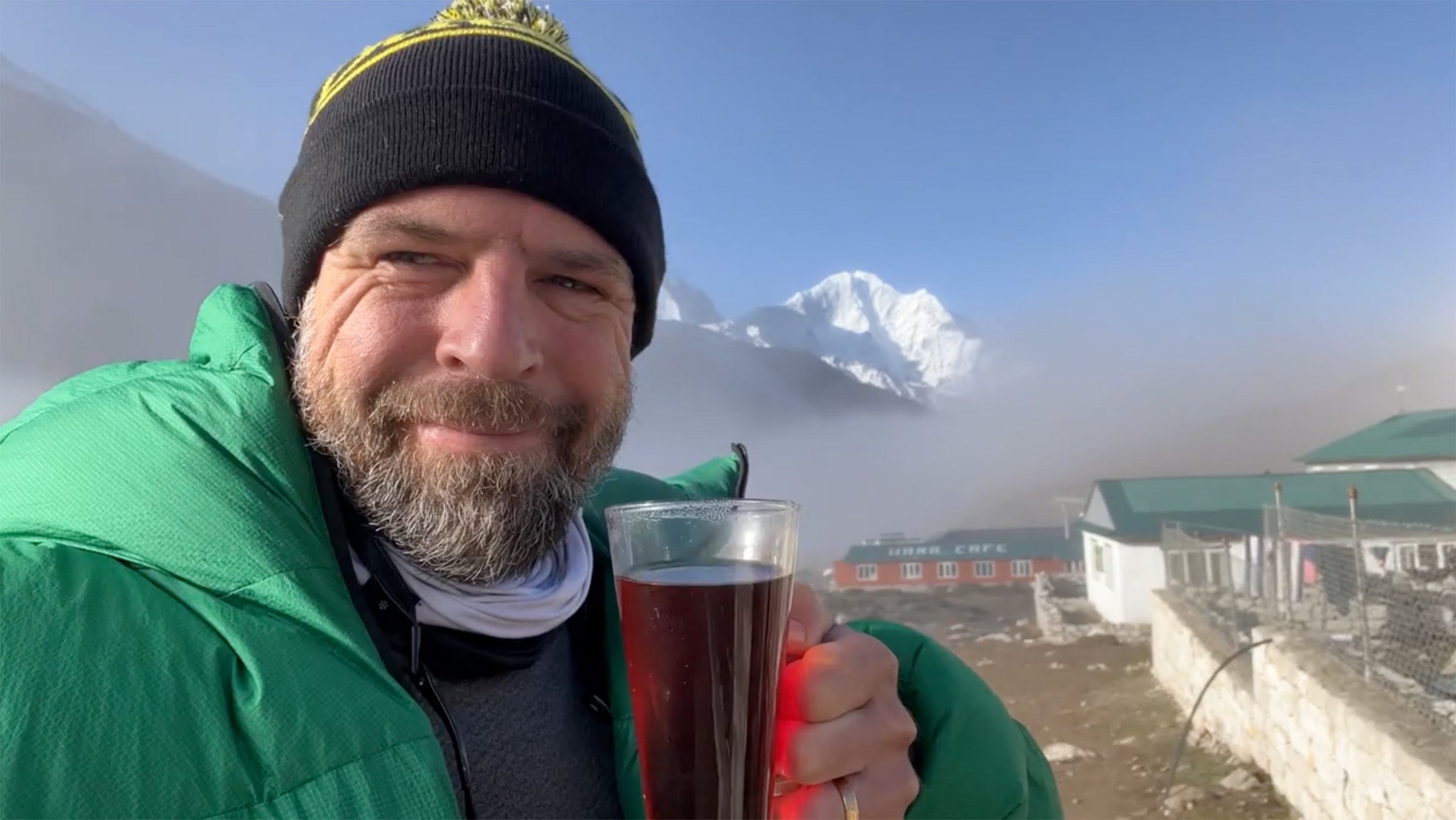Part of the challenge of hiking to Mount Everest Base Camp is avoiding illness and exhaustion. It’s no secret that tourists often pass gastrointestinal viruses and head colds to each other during the journey, and the extreme altitude makes the body particularly vulnerable to infection. The altitude you attain during the trek to Mount Everest can also cause serious (or even fatal) health conditions, so taking extra precautions could mean the difference between a great or a miserable experience.
A Few Small Tricks to Stay Healthy on the Trail
I always protect my skin and face from the sun by wearing a hat, a hood, and plenty of sunscreen. The high-altitude sun is strong, and even a light sunburn can steal energy and fluid from your body that would be better used boosting your immune system.
I also protect my lungs from the dust on the trail, which can contain particulates from mule or yak dung. Wearing a neck gaiter or N95 mask is important, and keeping it over your nose as much as possible makes a difference. Yes, it takes some fussing on the uphills to keep your sunglasses from fogging up, but protecting your breathing passages is worth the annoyance.
Along the trek, mineral water in plastic bottles is available for purchase, but I avoid it, given the environmental impact and the difficulty of getting the empty plastic bottles to a proper recycling facilities. Instead, I carry a Nalgene bottle and a thermos, filling them both with boiled water when I stop.
I follow the advice of local guides who will tell you that above 10,000 feet, you should only drink warm water—taking small sips throughout the day rather than chugging a half-liter in one go. There’s also the added benefit of filling your Nalgene bottle with boiling water at night and tucking it into your sleeping bag with you.
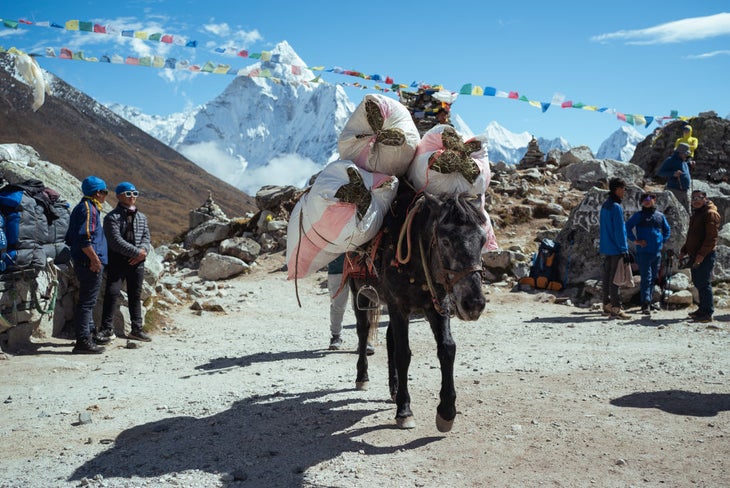
In terms of food, I suggest sticking to the local fare of Dal Bhat as a cost-effective way of staying healthy. The meal is a good balance of rice, lentils, and vegetables and comes with free refills at most restaurants. I try to only eat hot foods made from locally sourced ingredients like spinach and potatoes, and I avoid all uncooked vegetables for the fear of getting a gastrointestinal bug.
I like to bring along protein powder or a vitamin supplement like Athletic Greens to supplement the limited fresh food available as the altitude increases.
My most important rule is to wash my hands with soap as often as I possibly can, and always before every meal.
But even my rules aren’t perfect. Everyone’s body responds differently, and it’s best to hike with a flexible attitude. My cameraman and friend who is traveling with me picked up a dreadful case of food poisoning from eating dried yak meat in a stew—a meal that should have been safe. We took an unplanned day off, and he recovered. The mountains demand flexibility and with sickness or with altitude, it’s best to rest when the situation demands.
I have another trick for staying healthy—avoiding crowds. The farther up the Khumbu Valley I’ve hiked, the more I’ve actively avoided groups of hikers. I also scheduled in a full day of rest to allow my body to get accustomed to the thin air. While some hikers try to get to Base Camp as quickly as possible, I’ve given myself a full 11 days to complete the 40-mile walk.
Resting for a Day in Dingboche
I chose the town of Dingboche at 14,500 feet for my rest day. It’s just six miles from Everest Base Camp. I picked out the Ama Dablam Lodge because it was less crowded than other tea houses. Alas, this meant there was no espresso machine in the dining room, but it was a creature comfort I was willing to sacrifice. After my alarm sounded at 6 A.M. I made my own coffee with a pour-over pack.
I chose Dingboche for a day off for another reason—I have brought a flying drone with me to Mount Everest to capture images of Base Camp, the Khumbu Icefall, and other parts of the peak. But in order to legally fly the device, I must first register it with the local authorities. And there’s a police station in Dingboche.
As I walked to the tiny police station, I stopped into a place called Cafe 4410—on the menu were gluten-free pancakes, lattes made with oat milk, and burgers. Yes, another sign of the Mount Everest region’s rapid change due to tourism. The coffee was delicious.
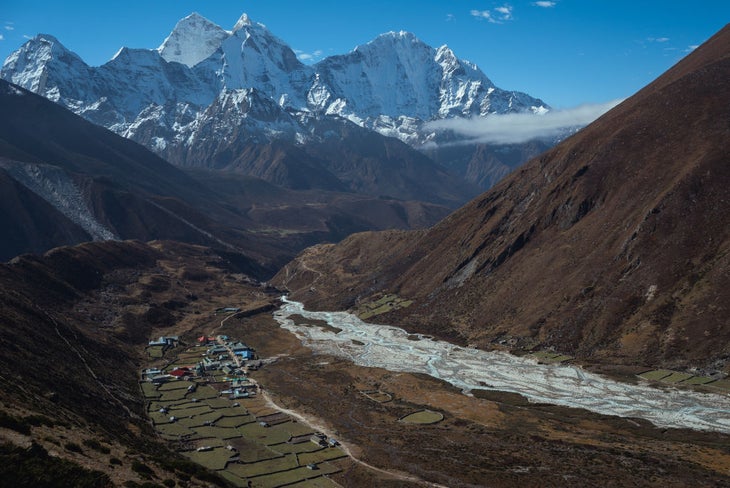
Obtaining a permit to fly a drone in Nepal as a foreigner was a somewhat Kafkaesque exercise in patience. The permit itself costs around $2,000 (or 270,000 Nepal Rupees). But paying for the permit is the easy part. You need a local fixer to help obtain the necessary paperwork from a half-dozen regional and national governmental offices. I started this process long before I left the United States for Nepal—it took a month to simply get the papers I needed to sign.
There are other hoops to jump through: I am required to physically check in with several local governmental bodies, police precincts, and National Park offices along the way. As I’ve learned during my 20-years of working in Nepal, these processes usually go swimmingly. But all it takes is one grumpy official who is having a bad day to stop the process dead in its tracks. And I would advise against flying a drone at Mount Everest without a permit. Local police love to make an example out of people who don’t follow the rules.
When I arrived at the police station in Dingboche, four officers were lounging outside on plastic lawn chairs, enjoying the sunshine. They wore heavy blue down jackets with a police ensignia on their chests. Three of the four had manicured Bollywood-style mustaches.
I’m fluent in Nepali, and speaking the local language to government officials can either open doors or give a disgruntled official the opportunity to ask additional questions and slow down the process. In Dingboche, I lucked out. Within 30 seconds of showing the officers my stack of paperwork, they warmed to me. I spent the next hour drinking cups of foamy Nescafe with the guys and chatting with them about their lives at the foot of Mount Everest.
The officers told me they were proud that the Dingboche department was probably the highest in Nepal and “maybe even in the world,” one of them said. They admitted to being bored. Life in the village was slow, and the primary commerce was visiting trekkers.
“We only have something interesting to do once or twice a month,” one of them admitted.
With my drone paperwork approved, I departed the station with my crew—we’re also producing a daily news update on Instagram called —to take a short hike uphill to expose my body to the altitude and help with my acclimating. We followed a steady procession of trekkers in bright jackets up a high ridge on the outskirts of the village. As we rested for a minute, gasping for breath, I decided to launch the drone, hoping to capture a view of the peaks before the clouds rolled in.
Making New Friends in Dingboche
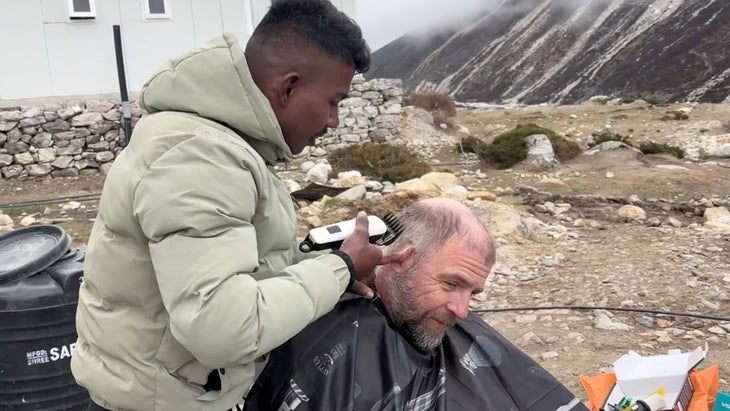
I looked down the hill and saw two of the policemen I had just been talking with moving swiftly up the mountain. They arrived at our launch zone and informed me that they would monitor our flight to make sure my drone didn’t interfere with the flight path for helicopters.
But as soon as I launched my drone, I saw that these guys were also after something else. They wanted me to snap dramatic photos of them, posed like action figures against the towering peaks. I was more than happy to oblige. For the next hour or so we walked along the ridge with the officers, taking epic drone footage of them clad in different articles of my wardrobe.
As we hiked back into the village, one of the police offers stopped me. He informed me that I simply needed a haircut. This was puzzling—I’m almost thoroughly bald. Not wanting to spoil the moment, I agreed. “Come by the police station after lunch,” the officer told me.
After a warm lunch of rice and lentils and chicken curry back at the lodge, I completed my writing assignment for the day. A thick and cold fog settled in over Dingboche, and at 4 P.M. I ventured back to the police station. Two offers were still there, wrapped in heavy wool blankets. After two cups of Nescafe, one of the policemen, the barber, led me to an empty field behind the station. I sat in one of the plastic chairs. He wrapped an apron around my neck and torso and got to work with an electric shaver, just as it began to snow.
The haircut took about a half hour, with the snow increasing in intensity the entire time. His hands were steady and firm, as he ran the shaver across my head, beard, and across the insides of my ears. I asked him where he learned to cut hair. “Youtube,” he said, without pausing.
I was getting cold. The snow was gathering in clumps on my pants and the barber’s apron. The policeman barber unwrapped a disposable blade and set it into a straight razor. As he sprayed my neck and head with cold water, I began to shiver uncontrollably. I stopped myself from shaking as he drew the blade around my neck. “I’m not very good at this,” he said.
In that moment, frozen and a bit scared, sitting in the lap of mountains that I couldn’t then see, in the hands of this country that has given me so much, I was as warm and as secure as I’ve ever been, as anyone could ever be.

